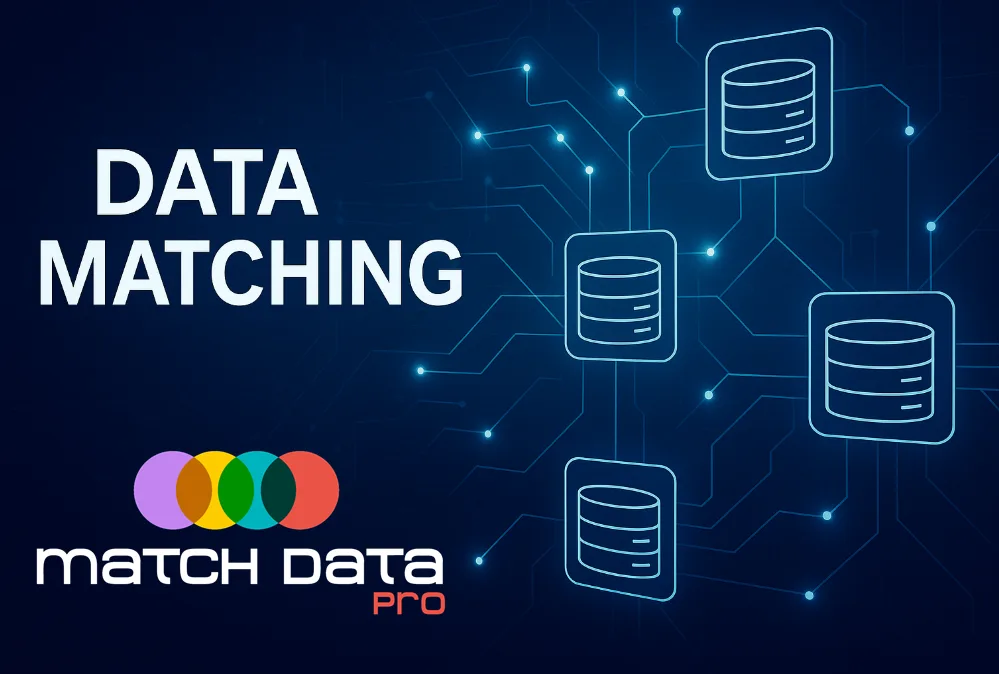What Is Data Matching?
A Simple Guide with Examples

Modern businesses collect data from everywhere—CRMs, websites, billing systems, marketing tools, spreadsheets, SaaS platforms, and even handwritten forms. The problem is, these data sources rarely agree. One customer appears five times under slightly different names. Product codes don’t line up across systems. Emails are missing. Postal codes are inconsistent.
That’s where data matching comes in.
Data matching helps you find and connect records that refer to the same real-world entity—even when those records don’t exactly match. If you’ve ever tried to clean or deduplicate a messy dataset, you’ve already run into this problem.
This guide breaks down what data matching is, why it matters, how it works, and examples of how organizations use it every day.
What is data matching?
Data matching is the process of identifying and linking records that refer to the same person, company, product, or entity across one or more datasets. Even when records don’t perfectly match, data matching uses rules or similarity algorithms to detect duplicates or relationships.
It’s also commonly known as:
Record linkage
Entity resolution
Deduplication
Example:
| Record A | Record B | Match? |
|---|---|---|
| Jon Smith | Jonathan Smith | ✅ Yes |
| 555-123-9988 | (555) 123-9988 | ✅ Yes |
| Acme Incorporated | ACME Inc. | ✅ Yes |
Data matching doesn’t require exact text matches. Instead, it focuses on similarity and logic to determine connections.
Why is data matching important?
Bad data leads to bad decisions, extra costs, and a frustrating experience for customers. Duplicate or incomplete data can hurt:
| Problem | Impact |
|---|---|
| Duplicate customer records | High marketing costs and poor personalization |
| Multiple supplier entries | Inflated spend and accounting errors |
| Inconsistent product IDs | Inventory and reporting mistakes |
| Mixed contact details | Failed service or compliance risk |
Data matching solves this by:
✅ Eliminating duplicates
✅ Creating a unified view of people or entities
✅ Improving data quality and reporting
✅ Reducing storage, licensing, and marketing costs
✅ Enabling better analytics and automation
✅ Supporting regulatory compliance (GDPR, HIPAA, AML, KYC, etc.)
How does data matching work?
Data matching follows a structured process:
1. Data preparation
Before matching can begin, messy data must be cleaned and standardized:
Trim whitespace
Normalize case (e.g., “JOHN SMITH” → “John Smith”)
Standardize phone numbers and addresses
Split or merge fields when needed
2. Comparison rules
Each record is compared across specific fields:
Exact matches → Email, SSN, ID
Approximate matches → Name, address
Business logic → Same company + similar domain name
3. Scoring / similarity
Similarity is calculated using fuzzy matching functions like:
Jaro-Winkler
Levenshtein distance
Token-based matching
Phonetic matching (Soundex/Metaphone)
4. Match decision
Each comparison produces a match score. If the score is:
Above the accept threshold → Match ✅
Below the reject threshold → Not a Match ❌
In between → Possible Match 🤔 (send to review)
5. Grouping and merging
Once matched, records are grouped so a single entity has a unified profile:John S. Smith (Sales CRM) + J. Smith (Support DB) → John S. Smith (Master Record)
What are examples of data matching?
Here’s where it becomes real. Organizations use data matching every day:
| Industry | Use Case |
|---|---|
| Ecommerce | Merge duplicate customer profiles |
| Banking | KYC matching and fraud detection |
| Healthcare | Merge patient IDs across hospitals |
| Insurance | Claims matching and provider validation |
| Government | Census deduplication and citizen services |
| Education | Student enrollment matching |
| Marketing | Clean mailing lists |
| Telecom | Subscriber identity resolution |
| Supply Chain | Vendor/supplier deduplication |
Types of data matching
There are several matching approaches depending on data quality:
1. Exact matching
Matches based on identical values (like Social Security Number or email).
✅ Fast and accurate
❌ Only works on clean data
2. Deterministic matching (rule-based)
Uses rules like:IF FirstName AND LastName AND ZIP Code match THEN Match
3. Probabilistic matching
Uses weights and confidence scoring to determine likelihood of a match.
✅ Handles missing data
❌ More complex to configure
4. Fuzzy matching
Matches similar strings (like “Acme Co” vs “Acme Corporation”).
✅ Great for messy names or inconsistent data
❌ Can create false positives if not controlled
5. AI-assisted matching
Uses machine learning to detect entity similarities automatically.
✅ Reduces manual review
✅ Adapts to data patterns over time
❌ Requires training and careful thresholding
Common data matching challenges
Even with the right tools, matching can be tough because data is messy:
| Challenge | Example |
|---|---|
| Inconsistent formats | “123 Main St.” vs “123 Main Street” |
| Missing fields | Null emails or phone numbers |
| Nicknames | “Bill” vs “William” |
| Name order issues | “Juan Carlos Garcia” vs “Carlos Garcia Juan” |
| Multi-language names | Chinese, Spanish, Arabic formatting |
| False positives | “John Baker” and “John Barker” shouldn’t match |
| Scale | Matching millions of records takes time |
| Multiple definitions of a match | Sales, Finance, and Compliance may define “match” differently |
Data matching vs data merging vs deduplication
| Concept | Purpose | Example |
|---|---|---|
| Data Matching | Identifying related records | Detect two records that belong to the same person |
| Deduplication | Removing duplicates | Combine duplicate rows |
| Merging | Creating a single master record | Keep best phone number, latest address |
Data matching tools
Data matching can be done with:
| Category | Examples |
|---|---|
| Code libraries | Python (RapidFuzz, Dedupe), R (RecordLinkage) |
| Databases | DuckDB, BigQuery + SQL fuzzy logic |
| Commercial platforms | Talend, Informatica, SAS |
| Cloud tools | Azure Purview, AWS Glue |
| AI matchers | Modern systems that use hybrid rules + AI models |
Good tools support:
✅ Match definitions (rules)
✅ Fuzzy logic
✅ Threshold tuning
✅ Grouping
✅ Human review
✅ Scalable processing
✅ Audit history
Final thoughts
Data matching is essential for any organization serious about data quality. Whether you’re deduping customers, cleaning vendors, or consolidating records before AI analytics—matching is the foundation of everything.
When done right, it unlocks accurate analytics, trusted customer profiles, clean databases, and efficient operations.
Or if you’re already working with messy data, we can walk through your use case anytime—just ask or schedule a demo.
FAQ
Data matching is used to eliminate duplicates and connect fragmented data to create unified records for people, companies, or entities.
Fuzzy matching finds similar—but not identical—values using algorithms. It handles typos, spacing issues, and variations like "Jon" vs "John."
Yes. AI can evaluate match likelihood and reduce manual review effort by scoring edge cases and explaining match reasoning.
Entity resolution is a broader term that includes data matching plus merging records and managing master identities.
